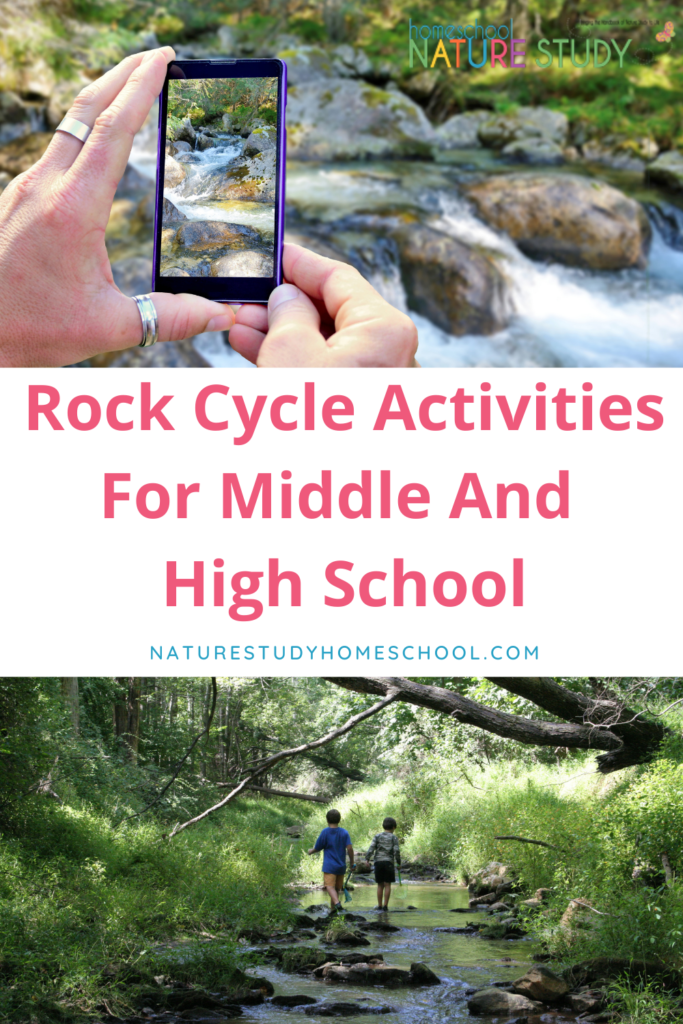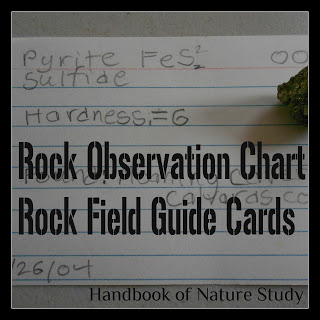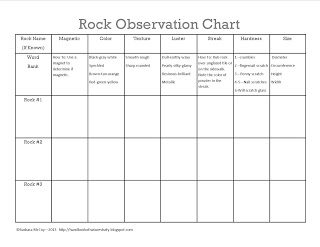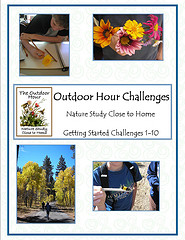An introduction to geology with rock cycle activities for middle and high school. This is a great homeschool nature study and a simple way to explore rocks as a nature study in your own backyard!
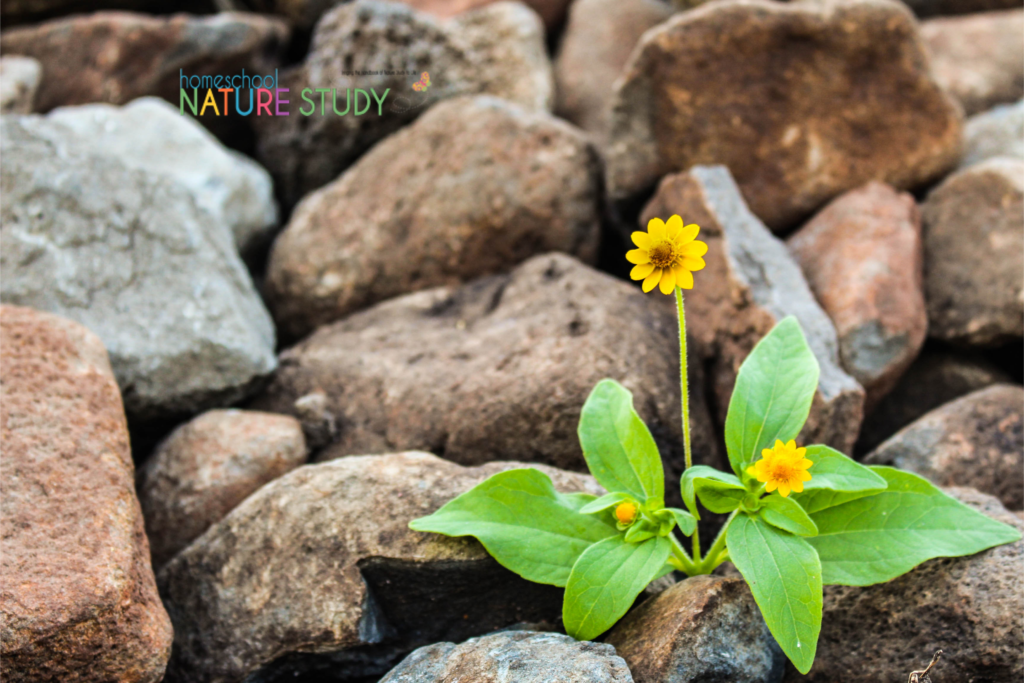
Rock Study of Granite and Other Igneous Rocks
Rock Cycle Activities, Nature Study Lesson Plans and Inside Prep Work For Your Homeschool:
- Read the Handbook of Nature Study pages 743-750 (Introduction to Rocks and Minerals and Lessons 209—210).
- For this challenge, concentrate on Lesson 209– Granite. You can also observe other igneous rocks: basalt, obsidian, and pumice.
- View the images and the videos in the Additional Links section below.
- Advanced study: Interactive Rock Cycle—This is a great overview of the rock cycle and identifying rocks.
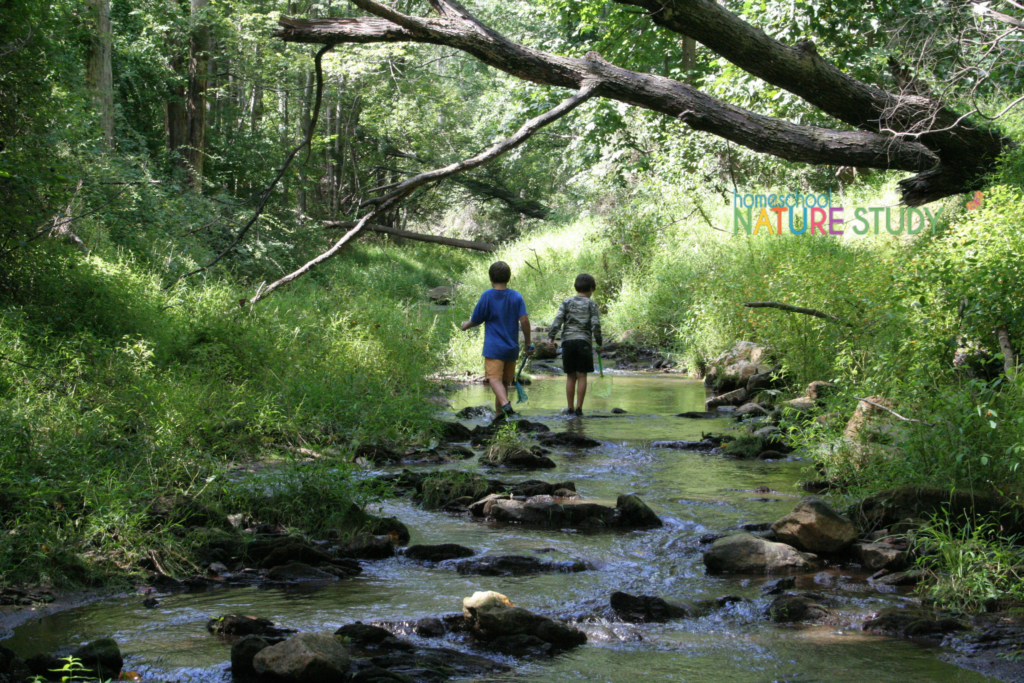
Outdoor Hour Time:
- Go exploring for rocks. Bring along a collecting box or bag and see if you can find some rocks, particularly granite or other igneous rocks. Remember what you read in the Handbook of Nature Study and the images you viewed in your preparation.
- Collect some samples to bring inside to look at closely. Make sure to take a photo for your Rock Photo Scavenger Hunt notebook page.
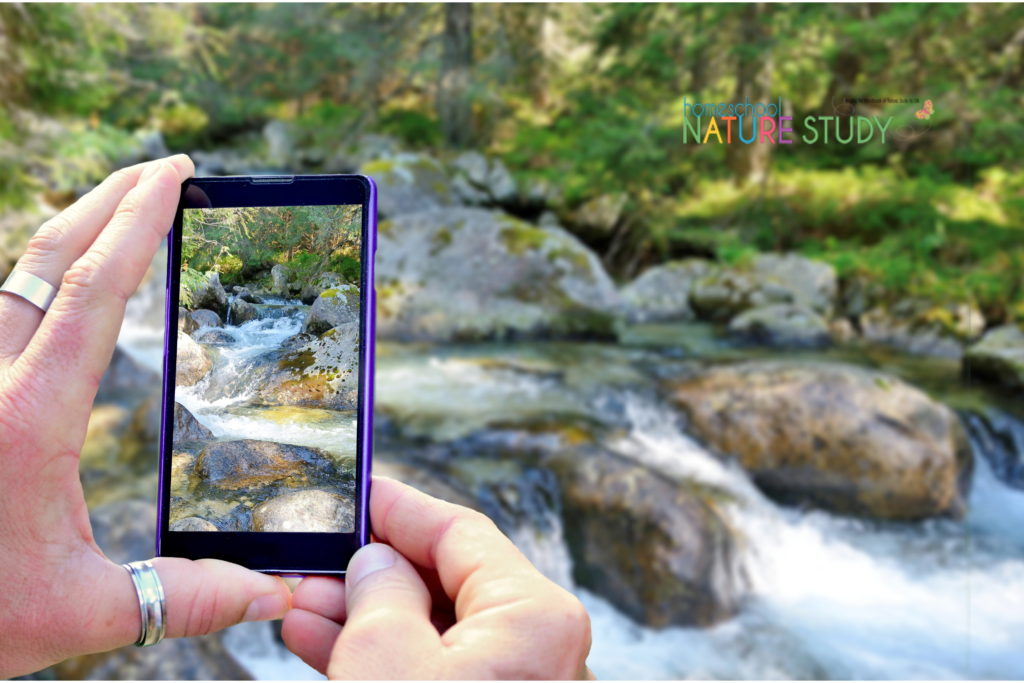
Follow-Up Rock Cycle Activities For Your Homeschool:
- Choose one of the rocks you collected outdoors and look at it closely using a hand lens. If you collected some granite, can you distinguish the various components? Record your observations in your nature journal.
- Advanced study: Diagram and describe the rock cycle in your nature journal.
- Advanced study: Use your observation skills and record your information in your nature journal. Use a rock identification key to identify your igneous rock.
Rock Study Learning Resource Links:
- Geology Video: Igneous Rocks (for younger students)
- Rock cycle interactive (simple explanations)
- Advanced Study: Igneous Rock video on YouTube.com
- Igneous Rock Images on Geology.com

Rock Nature Study in Homeschool Nature Study Membership
Find rock cycle activities and rock homeschool nature study resources in Homeschool Nature Study Membership! Included in membership:
- Rocks Big Grid – filled with nature study prompts for weeks of rock study!
- Rocks notebooking pages for: pyrite, obsidian, coal, chalk, hematite, pumice, zinc, talc, geode, amethyst, flint, coral and sponge.
- Rock Photo Hunt prompts and notebooking page
- Under a Rock notebooking page
- Plus 25+ courses and an interactive monthly calendar filled with nature study prompts and new nature study lessons.
